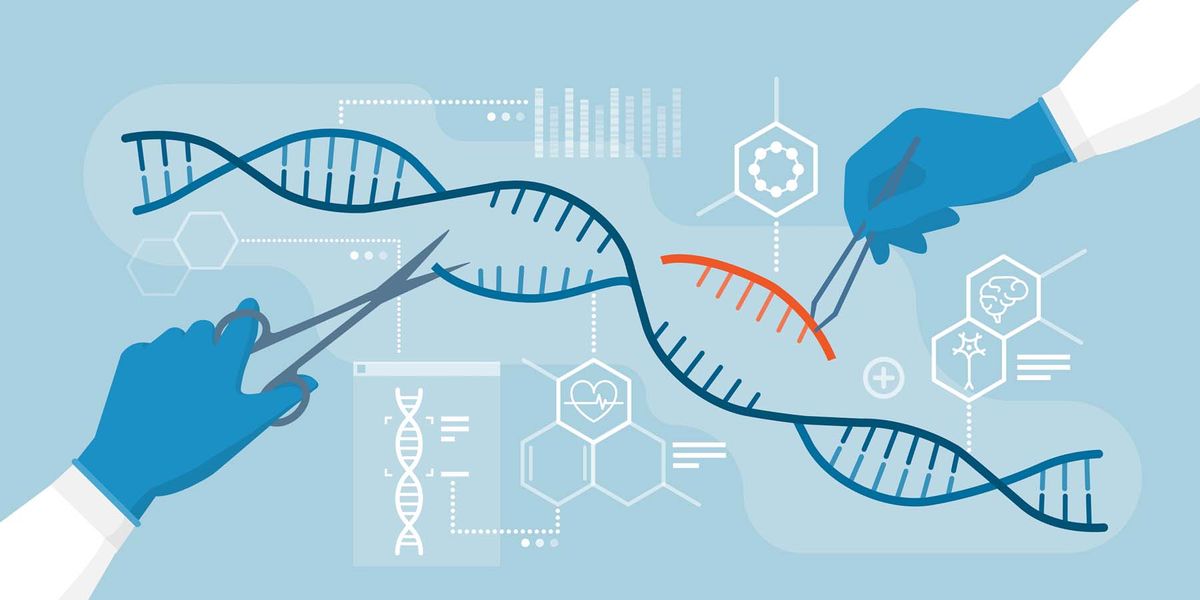General Health Tips & News
CRISPR Based Treatment Targeting COVID-19 and Influenza
By A.S. (staff writer) , published on May 11, 2022

Medicine Telehealth Health CRISPR COVID-19 Influenza
Over the past years, millions of individuals all over the world have gotten infected by the virus, and the world faces the third wave of COVID-19, everyone is in need of an effective cure more than ever before.
Drug Therapies for COVID-19 and its limitation
Numerous medications are currently being prescribed to those affected by the virus, as there is still no need cure for the disease. One of the most popular drugs that are prescribed include:
-
Remdesivir: This is a type of nucleotide analog, which is most frequently prescribed for the infection
-
Lopinavir-ritonavir: This belongs to the class of protease inhibitors.
-
Oseltamivir: This drug is a type of Neuraminidase inhibitor.
-
Lamivudine, Disoproxil, and Tenofovir: These drugs are a type of DNA synthesis inhibitor.
-
Hydroxyl Chloroquine and Chloroquine: These belong to the class of Antimalarial drugs.
However, despite the frequent prescription for the management of COVID-19 infection, these drugs have some limitations as well. Studies have shown that the COVID-19 strains belonging to different countries like China, Australia, and the USA, have mutations, making them slightly different from each other. More specifically, these mutations are found to exist mainly on amino acids 62 and 84 of the COVID-19 virus, which are of the type Single Nucleotide Polymorphism.
The genomic analysis that was conducted on these mutated strains has shown that these mutations might make them immune from the medication that was previously effective for them and hence lead to an even more rapid spread of these in the population.
What is CRISPR-Cas 13 System?
CRISPR stands for stands Clustered Regularly-Interspaced Short Palindromic Repeats and may be used as a genome-editing tool not only for the diagnosis but the treatment of numerous conditions. The CRISPR-CAS system is divided into two classes known as Class 1 and Class 2. The CRISPR-Cas 13 system consists of four protein families, Cas13a, Cas13b, Cas13c, and Cas14d.
An approach using the CRISPR-Cas13 system was designed by Nguyen and colleagues, this system works in that it causes the grinding of the RNA genome of the COVID-19 virus, which in turn significantly limits its ability to reproduce in the host and be transmitted to others.
It is made sure that the RNA genome of COVID-19 is specifically targeted by this approach by the use of crRNAs. These crRNA work by specially targeting the replicase-transcriptase molecules and spike genes in the COVID-19 virus.
Moreover, a specific gene found in COVID-19, known as RdRp proves to be an optimal target site for CRISPR-Cas 13 system, which causes its degradation.
Benefits of CRISPR-Cas13 System:
Influenza is a very commonly encountered infection that is caused by the Influenza virus, and previously there was no cure for it. A potential treatment for influenza was proposed by Cas13 enzyme, when used in cell culture, can effectively inhibit three types of ssRNA virus replication, which include the Influenza A virus, Choriomeningitis Virus, and the Vesicular Stomatitis. The efficient reduction of the RNA of the influenza virus in mammalian cells was demonstrated by the action of crRNA-directed Cas13 enzyme.
The CRISPR-Cas13 appears to be much safer than other systems, as it causes a phenotypical loss of function of the targeted gene without causing significant genomic losses. It also allows the targeting of the new variants of the virus as they emerge as they emerge and cause disease, as its designing process is much quicker and facilitates an early treatment. Moreover, its ability to target RNA instead of DNA also prevents the chances of any mismatches and accidental mutation in the individual. CRISPR-Cas13 system has the potential to be an extraordinary treatment option for not only influenza but also the new emerging variants of COVID-19, which have taken the world by storm.
References
Treatment of influenza and SARS-CoV-2 infections via mRNA-encoded Cas13a in rodents. Blanchard EL, Vanover D, Bawage SS, Tiwari PM, Rotolo L, Beyersdorf J, Peck HE, Bruno NC, Hincapie R, Michel F, Murray J, Sadhwani H, Vanderheyden B, Finn MG, Brinton MA, Lafontaine ER, Hogan RJ, Zurla C, Santangelo PJ. Nat Biotechnol. 2021 Feb 3. [Published online ahead of print.]
[2] Programmable inhibition and detection of RNA viruses using Cas13. Freije CA, Myhrvold C, Boehm CK, Lin AE, Welch NL, Carter A, Metsky HC, Luo CY, Abudayyeh OO, Gootenberg JS, Yozwiak NL, Zhang F, Sabeti PC. Mol Cell. 2019 Dec 5;76(5):826-837.e11.
Find articles related to: Medicine Telehealth Health CRISPR COVID-19 Influenza
More articles about General Health Tips & News
Back to the Health Tips Index




